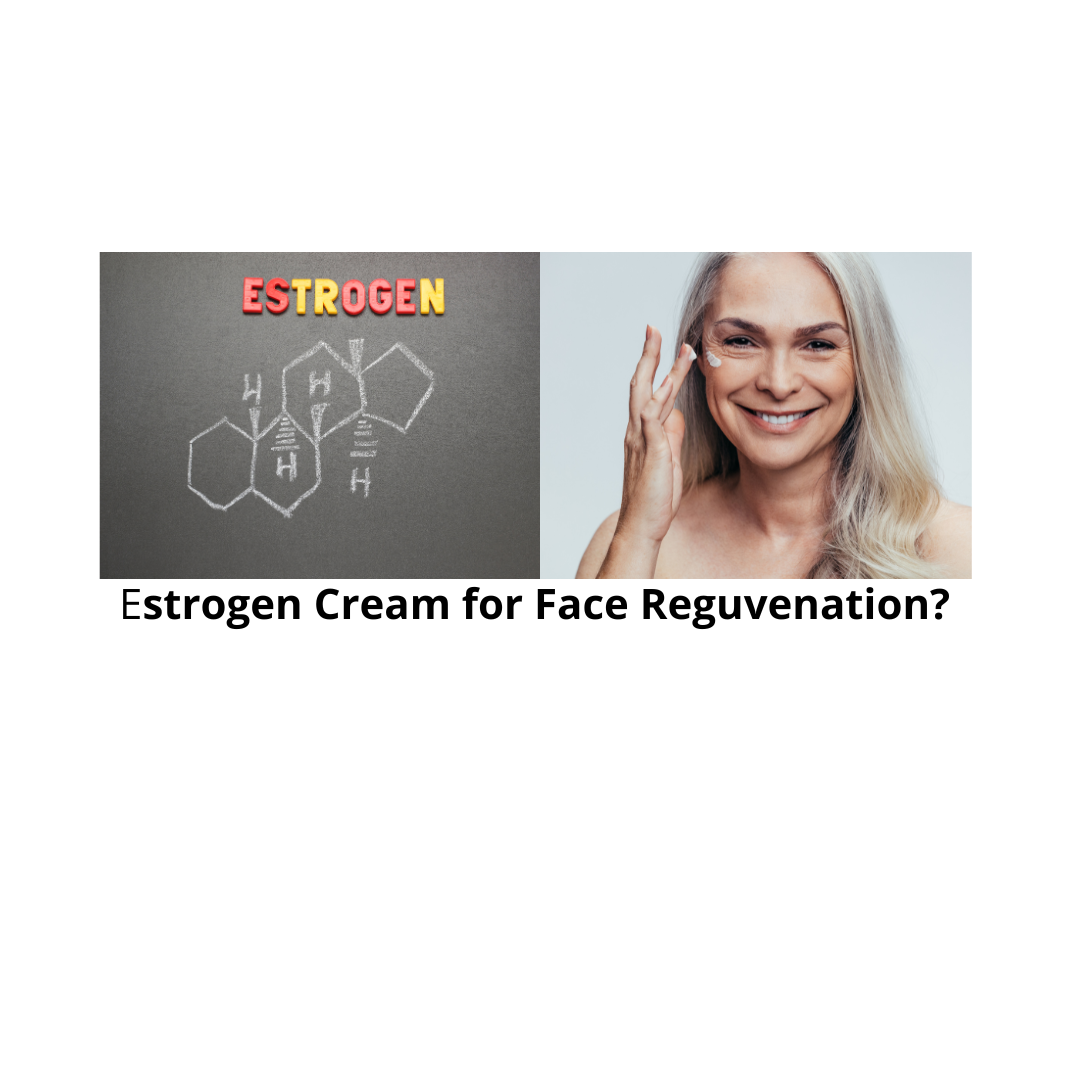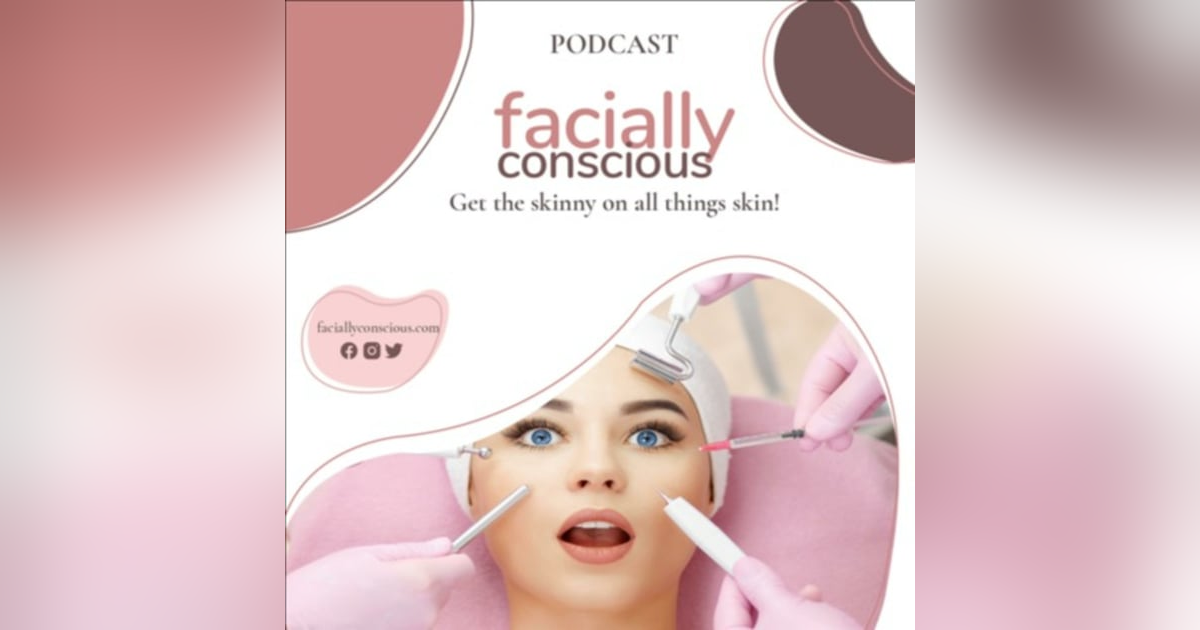The Estrogen Revolution: Why Topical Estrogen Is Becoming Skincare's Most Controversial Trend

The skincare world is buzzing with excitement over what many are calling the next breakthrough ingredient: topical estrogen. While growth factors, peptides, and exosomes have dominated recent discussions, estrogen is quietly emerging as a potential game-changer for aging skin. But is this hormone-based approach to skincare safe, effective, and suitable for widespread use?
In a recent episode of the Facially Conscious Podcast, titled "Hormonal Harmony or Havoc: Estrogen Cream on Trial with Dr. Emily Sikking OBGYN," hosts Dr. Vicki Rapaport, Trina Renea, and Julie Falls sat down with Dr. Emily Sikking, an experienced OB-GYN with 22 years of practice, to explore this emerging trend from both dermatological and gynecological perspectives.
The Science Behind Estrogen's Skin Benefits
Dr. Rapaport started the discussion by highlighting estrogen's impressive track record when it comes to skin health. "It builds collagen, it retains moisture, it helps increase skin thickness, basically everything you want in a product estrogen can provide," she explained. The hormone also supports wound healing and maintains skin elasticity, making it a compelling option for tackling the visible signs of aging.
As we age, our natural estrogen production decreases, causing thinner skin, less collagen, reduced moisture retention, and slower healing. Topical estrogen theoretically targets these issues by delivering the hormone directly to the skin, possibly reversing some age-related changes.
Dr. Sikking confirmed these benefits, noting that estrogen's effects are well-documented in medical literature. "The best way to absorb estrogen is through the skin," she explained, adding that transdermal delivery has become the preferred method for hormone replacement therapy because of its effectiveness.
The Medical Perspective: Concentrations Are Important
One of the most important points discussed on the podcast was the big difference between different estrogen formulas and their uses. Dr. Sikking highlighted that not all estrogen creams are the same, and knowing these differences is key for safe use.
Higher concentration estrogen creams, usually prescribed for hormone replacement therapy to treat menopausal symptoms like hot flashes and brain fog, need careful medical oversight. "When you do them in those higher concentrations, you're actually absorbing enough that the recommendations are that you need to counterbalance that with progesterone, if you have a uterus," Dr. Sikking warned. This is because higher systemic estrogen levels can influence the uterine lining, possibly leading to endometrial hyperplasia and, in severe cases, endometrial cancer.
However, lower concentration formulations, such as those used for vaginal atrophy (usually around 0.01% estrogen), show fewer systemic risks. These products have been safely used for many years and are often covered by insurance, even for women with a history of breast cancer when approved by their oncologists.
The Consumer Dilemma: Over-the-Counter vs. Prescription
The rise of over-the-counter estrogen-containing skincare products has created both opportunities and concerns. While these products typically contain lower concentrations that may be safer for general use, Dr. Sikking warned against a reckless approach to hormone application.
To just kind of like willy-nilly be slathering estrogen of any concentration all over your face or any other place, for that matter... can lead to a higher concentration that you're absorbing because your skin, as Dr. Rapaport will say, is the largest organ in the body," she explained.
The main concern is cumulative absorption. While a small amount of low-concentration estrogen on the face might be relatively safe, applying it to multiple parts of the body could greatly increase systemic absorption, potentially needing medical monitoring and progesterone supplementation.
Real-World Applications and Patient Experiences
Interestingly, both doctors noted they haven't yet seen many patients using estrogen specifically for facial skincare, although the trend is clearly emerging. Dr. Sikking mentioned that patients on prescribed estrogen therapy often ask about repurposing their medication for cosmetic purposes.
Her response is pragmatic: "As long as you're not using more than what we're prescribing and we're balancing with progesterone and we're monitoring you, do what you like." This approach lets patients already under medical supervision explore the cosmetic benefits of their prescribed hormones without increasing their overall exposure.
The podcast hosts discussed how this makes practical sense – instead of applying estrogen cream to the inner arm or thigh as usually suggested, why not apply it to areas where cosmetic benefits are more desired, such as the face and neck?
Potential Risks and Side Effects
The discussion also addressed potential adverse effects. Trina Renea shared a personal experience where increasing her estrogen patch dosage caused sudden cystic acne on her chin – something she had never encountered before. This emphasizes the individual nature of hormone responses and the need to find the right dosage.
While estrogen isn't usually linked to acne (which is more often associated with testosterone and progesterone), Dr. Sikking explained that hormones can transform into other compounds in the body, potentially leading to unexpected reactions. "Sometimes, it's listening to that inner voice of what your body is telling you and being a little more aware, a little more intuitive of your own body, because we're each individuals," she advised.
The Professional Perspective: What Practitioners Need to Know
For estheticians and other skincare professionals, the rise of topical estrogen offers both opportunities and responsibilities. Knowing about the different types of estrogen (estradiol, estriol, and estrone) and how their potencies vary is essential. For example, estradiol is more potent than the others and requires careful handling.
Practitioners should be prepared to discuss these products with clients and emphasize the importance of medical consultation, especially for individuals with:
- A history of breast cancer or other hormone-sensitive conditions
- Current hormone replacement therapy
- A uterus (requiring progesterone balancing with higher estrogen doses)
- Multiple medications or supplements that might interact with hormones
Looking Ahead: The Future of Estrogen in Skincare
Dr. Rapaport predicted that topical estrogen will become a significant trend in 2025, though she noted it lacks the "sexy" appeal of other trending ingredients like growth factors or exosomes. However, Dr. Sikking playfully disagreed: "Come on, estrogen is so sexy."
The conversation even discussed future possibilities, with Dr. Sikking suggesting that estrogen could become "the new filler," potentially administered through injectable formulations for sustained release.
The Bottom Line: Proceed with Caution and Medical Guidance
While topical estrogen shows promise for addressing aging skin concerns, the consensus among medical professionals was clear: this is not a trend to take lightly. The hormone's powerful effects on the body demand respect and proper medical supervision.
For consumers interested in using topical estrogen, the safest method is to consult healthcare providers who can evaluate individual risk factors, current medications, and suitable formulations. For those already undergoing hormone replacement therapy, discussing cosmetic uses with their prescribing doctor may help maximize their current treatment benefits.
As this trend continues to develop, staying informed through trusted sources like the Facially Conscious Podcast will be essential for both professionals and consumers exploring this new area of skincare.
The estrogen revolution in skincare is just starting, but with proper education, medical guidance, and respect for the hormone's potent effects, it could indeed be the next major breakthrough in anti-aging treatments.
To read more from Trina Reneá, join her on Substack.








